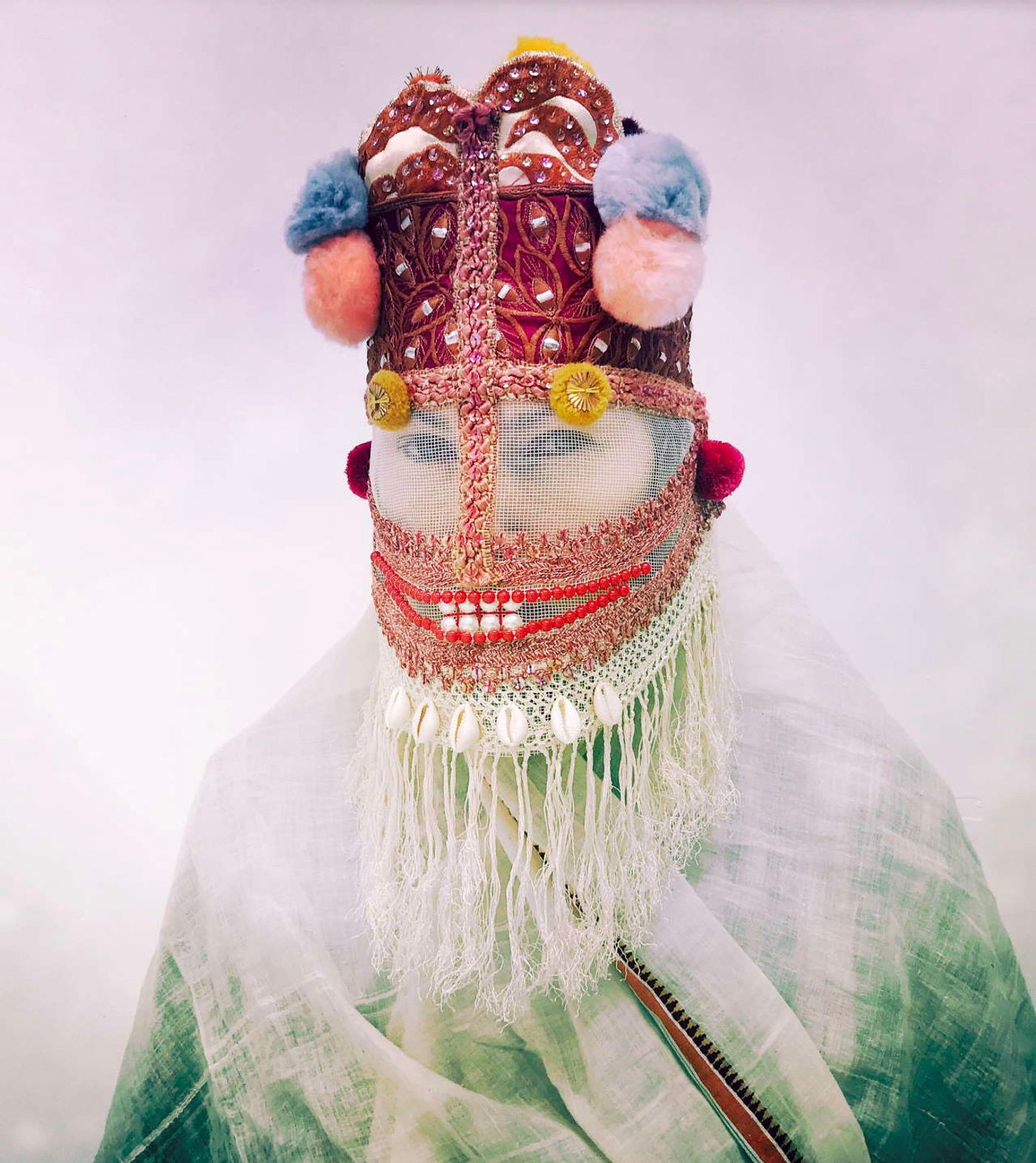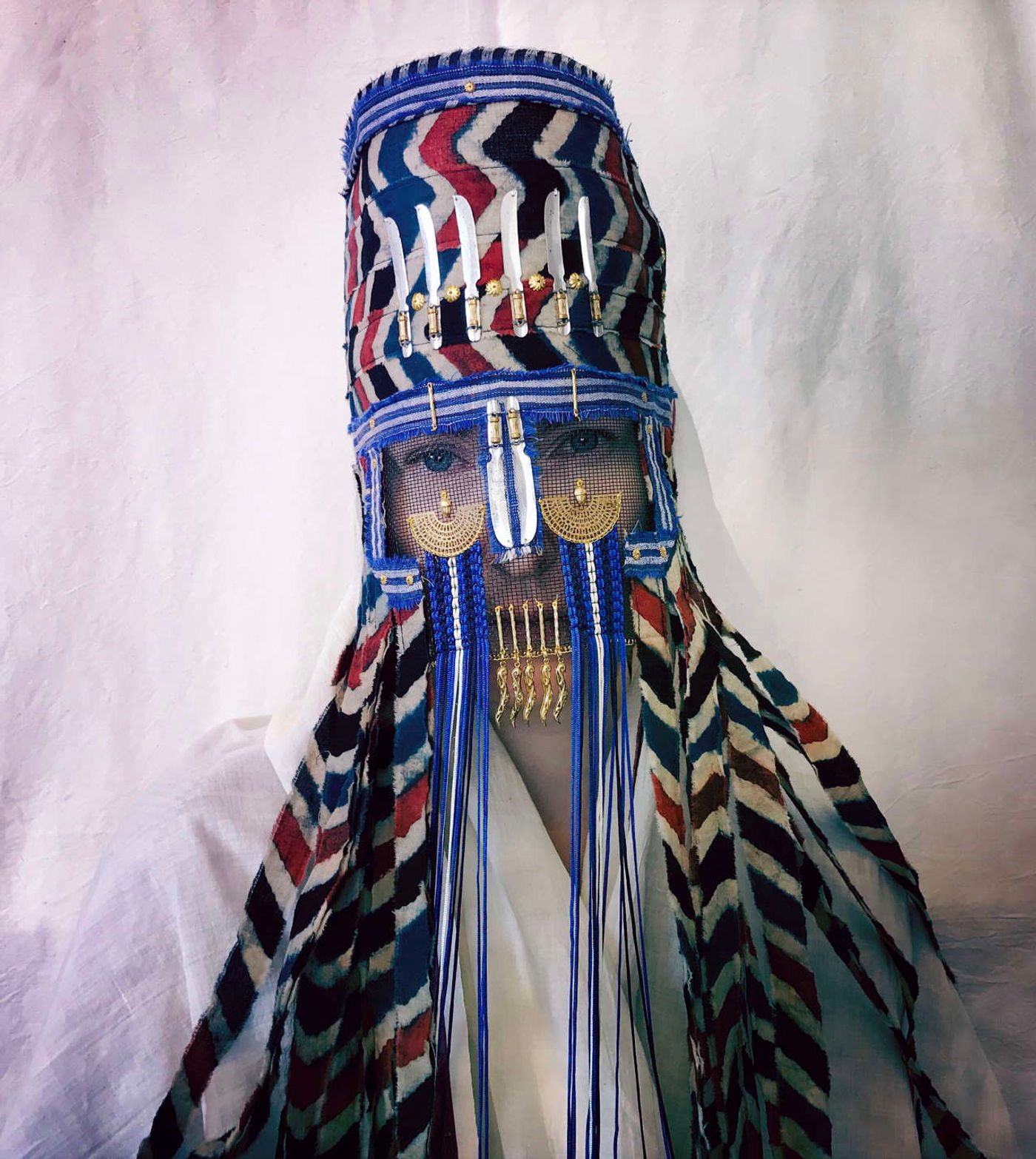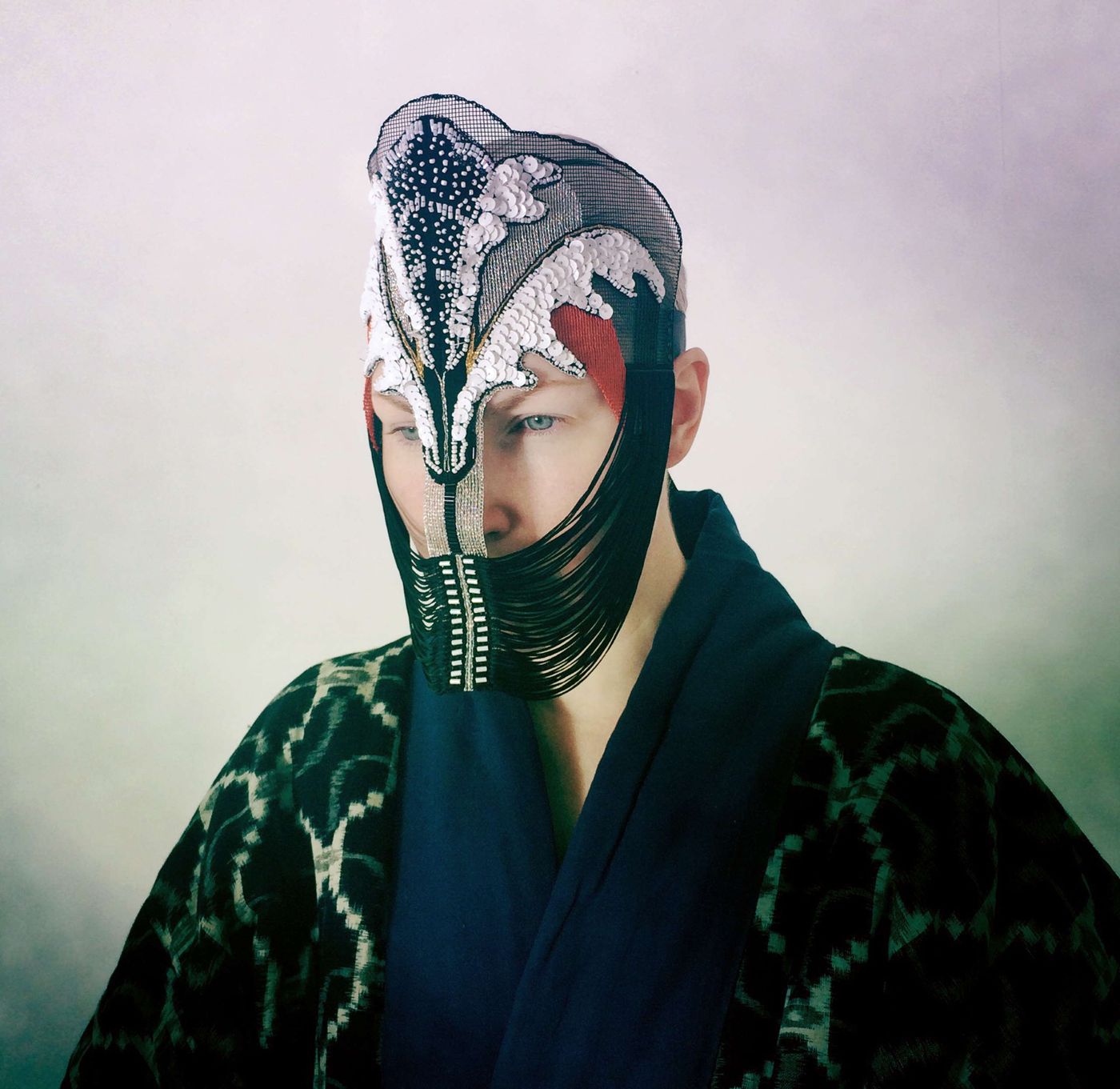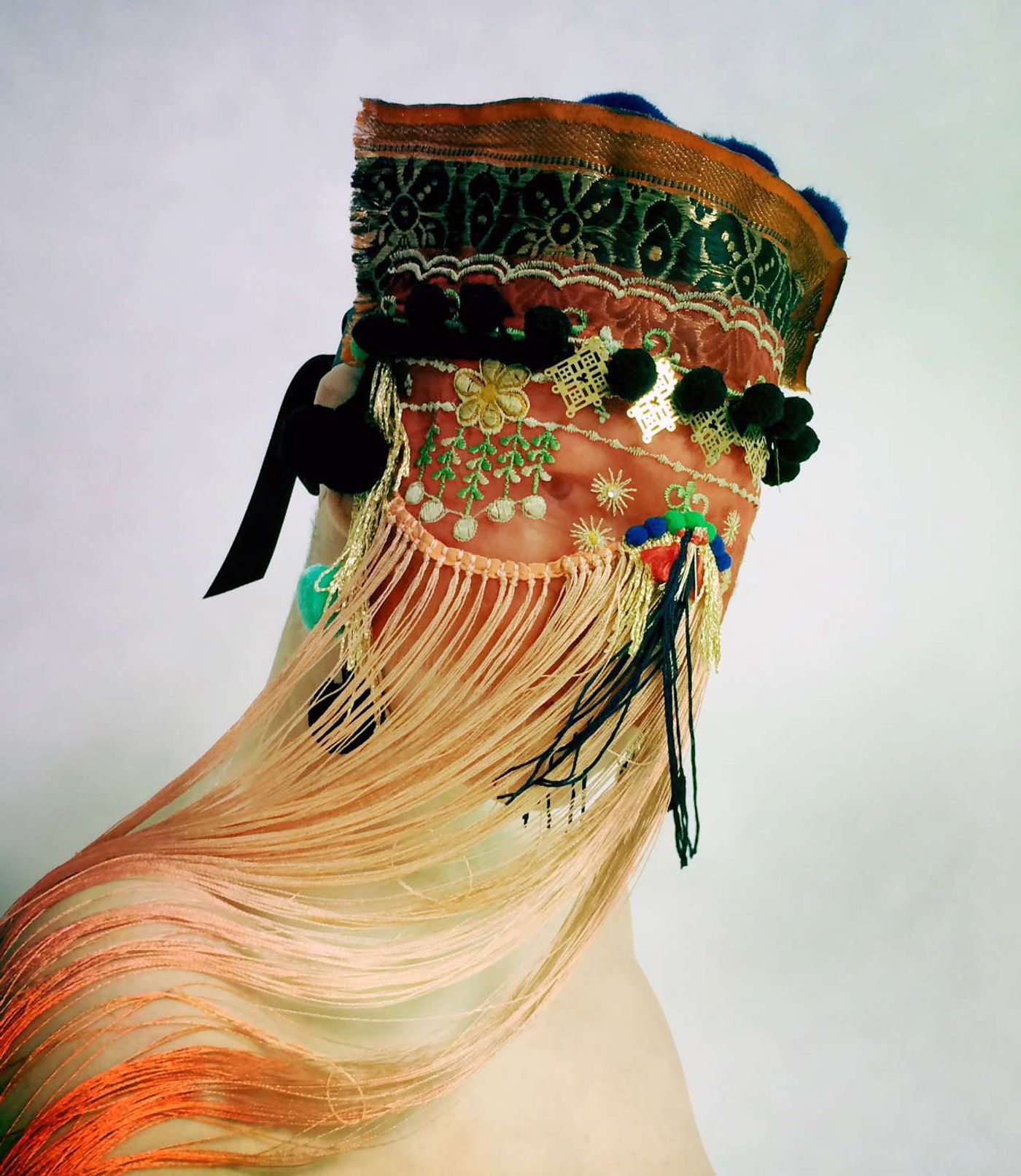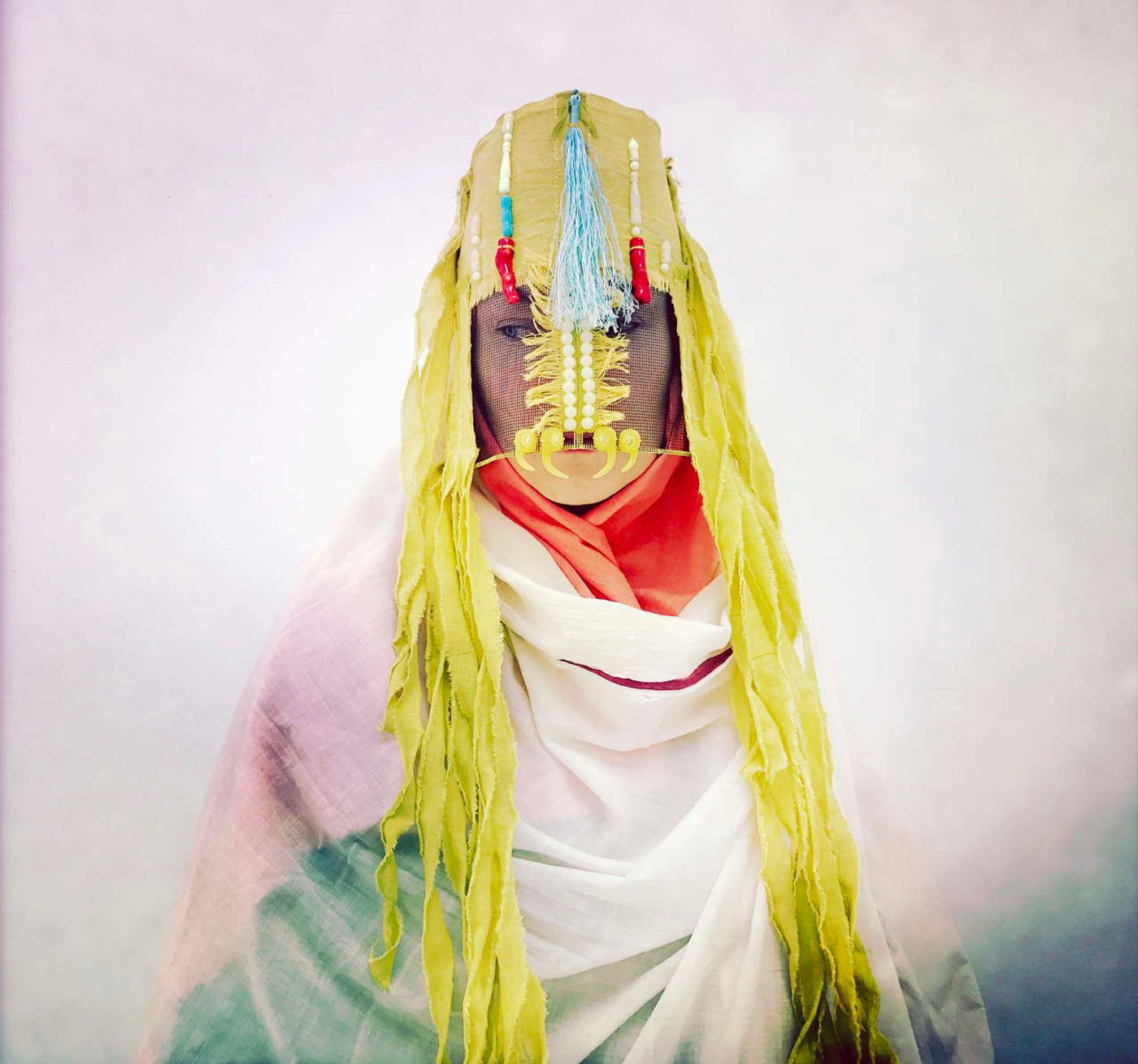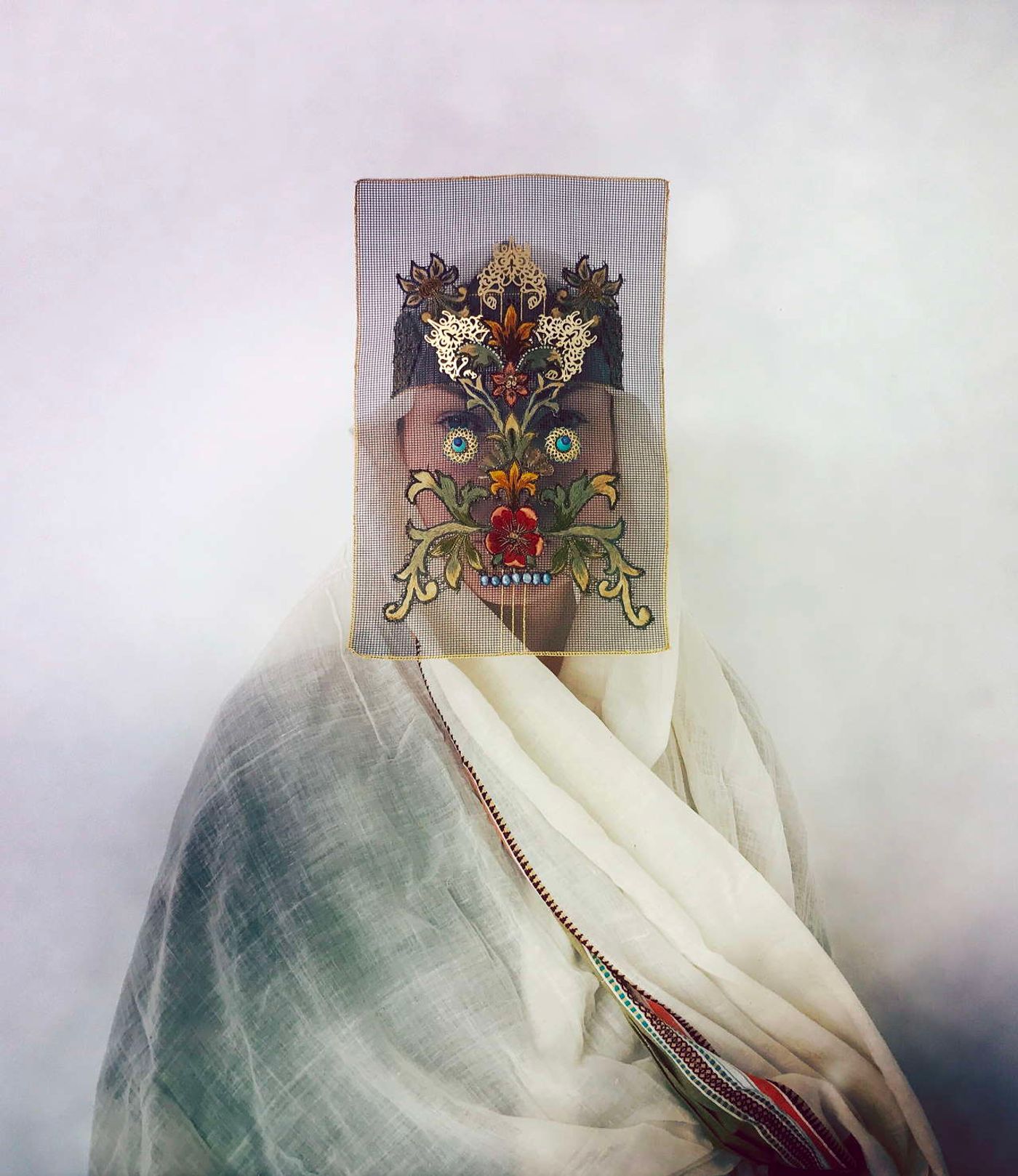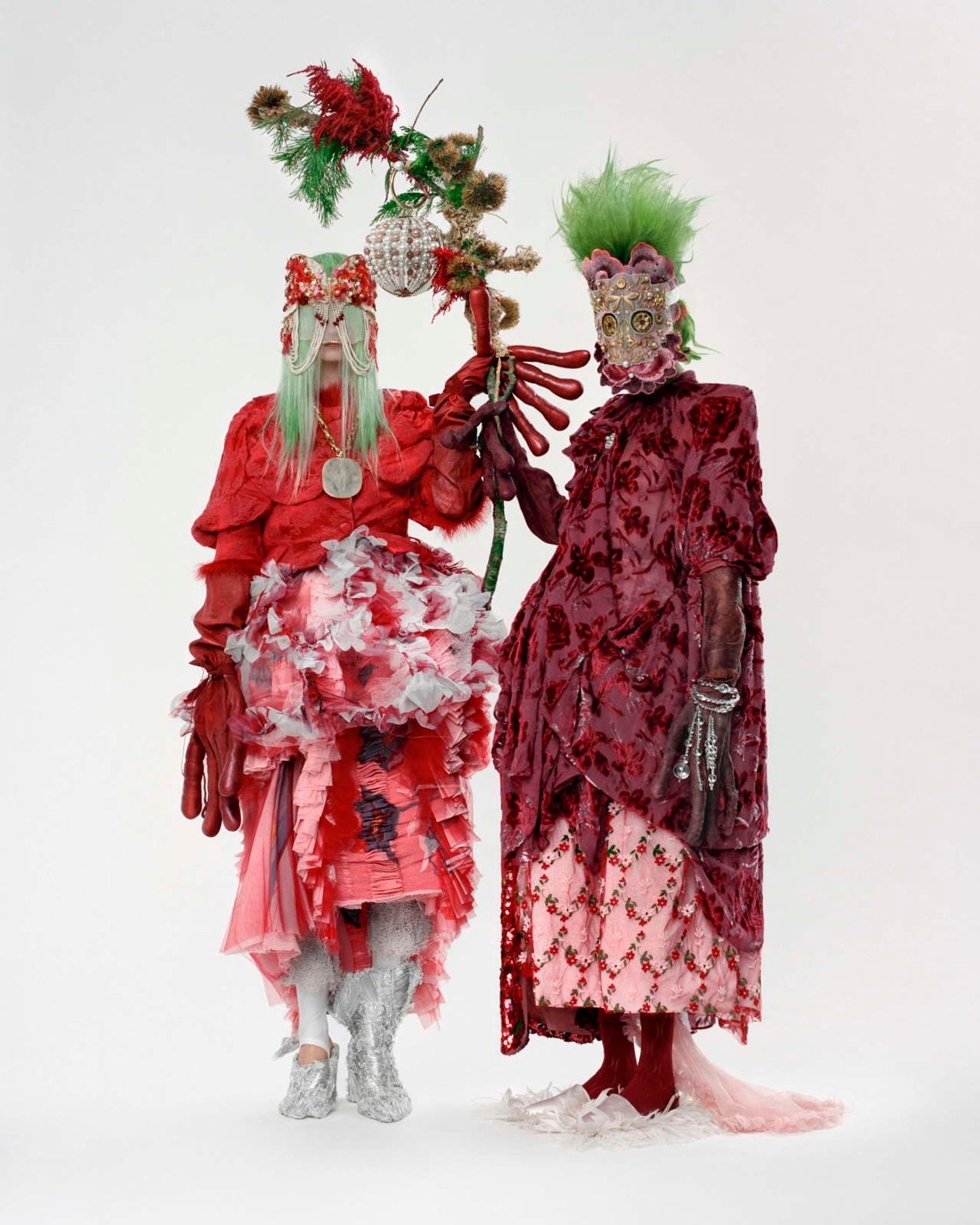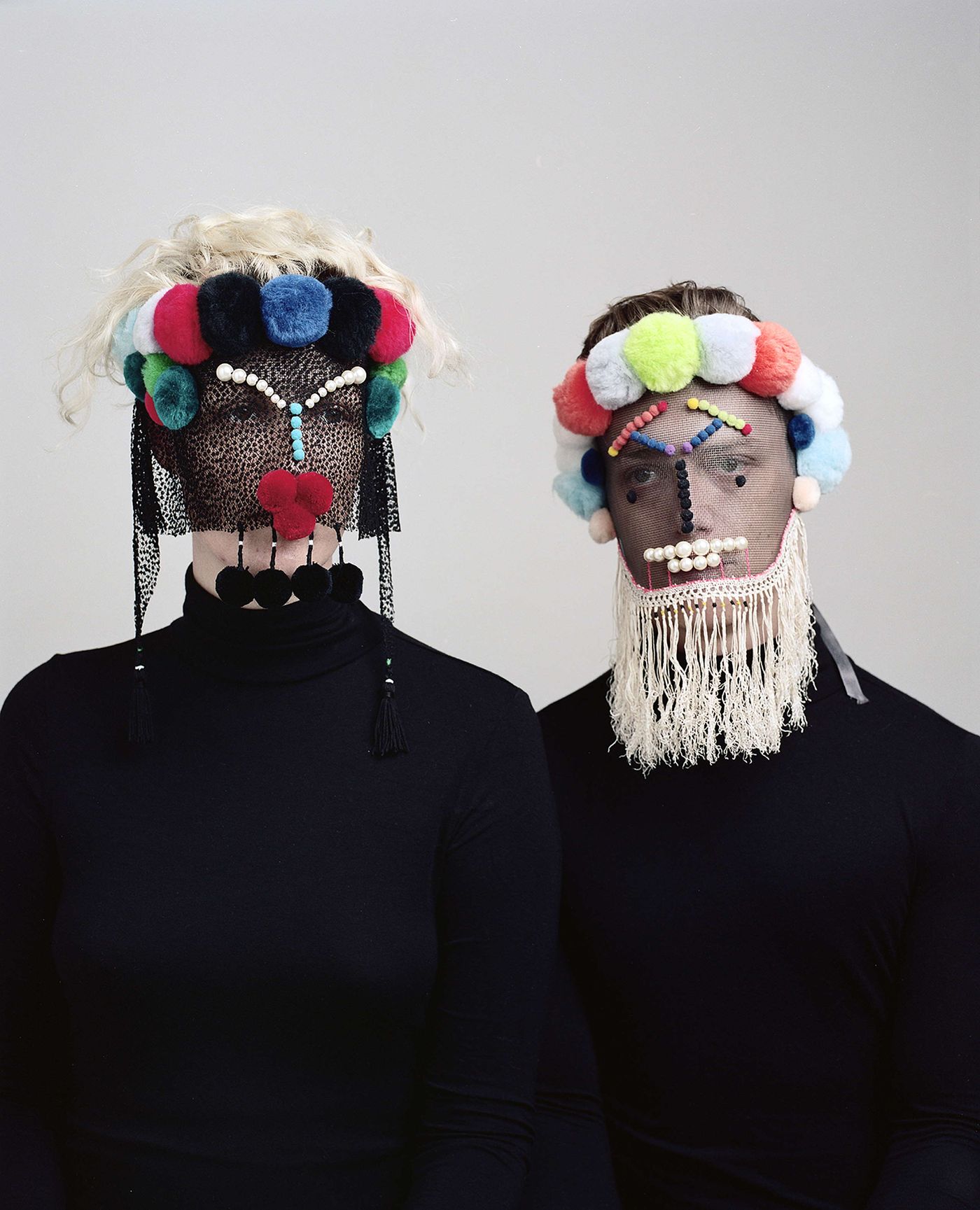
Damselfrau: The Bewitching Artistry of Magnhild Kennedy's Mask Making
Words by Eric David
Location
Damselfrau: The Bewitching Artistry of Magnhild Kennedy's Mask Making
Words by Eric David
There’s a peculiar thing happening on the Instagram account of London-based, Norwegian artist Magnhild Kennedy, a.k.a. Damselfrau; although most of the images are self-portraits, we never get to see her face. That’s because Kennedy is wearing elaborately adorned, intricately beaded, bespoke masks that she handcrafts in her studio using a variety of materials, from antique silk and tassels to scruffy tea towels and raffia. Kennedy is a self-taught artist who learnt sewing and beading techniques from books and YouTube, driven by a deep-rooted passion for playing with materials. Her focus on making rather than designing is what makes her masks exceptional as they defy critical exegesis. Blurring the lines between art, fashion and costume design, Kennedy’s work is unique, both in its aesthetics, which can be described as simultaneously baroque and post-apocalyptic, and sensibility, managing to unsettle and bewitch the viewer at the same time. Evoking a wide range of references, from cross-cultural folklore to sci-fi iconography, her masks don’t abide to any particular style or genre nor are they inspired by such sources, at least consciously. In fact, they are not masks at all according to Kennedy, but rather characters who she gets to embody every time she is photographed wearing them. Yatzer recently chatted with Kennedy about her mask-making, her avatar, and her creative urges.
(Answers have been condensed and edited for clarity.)
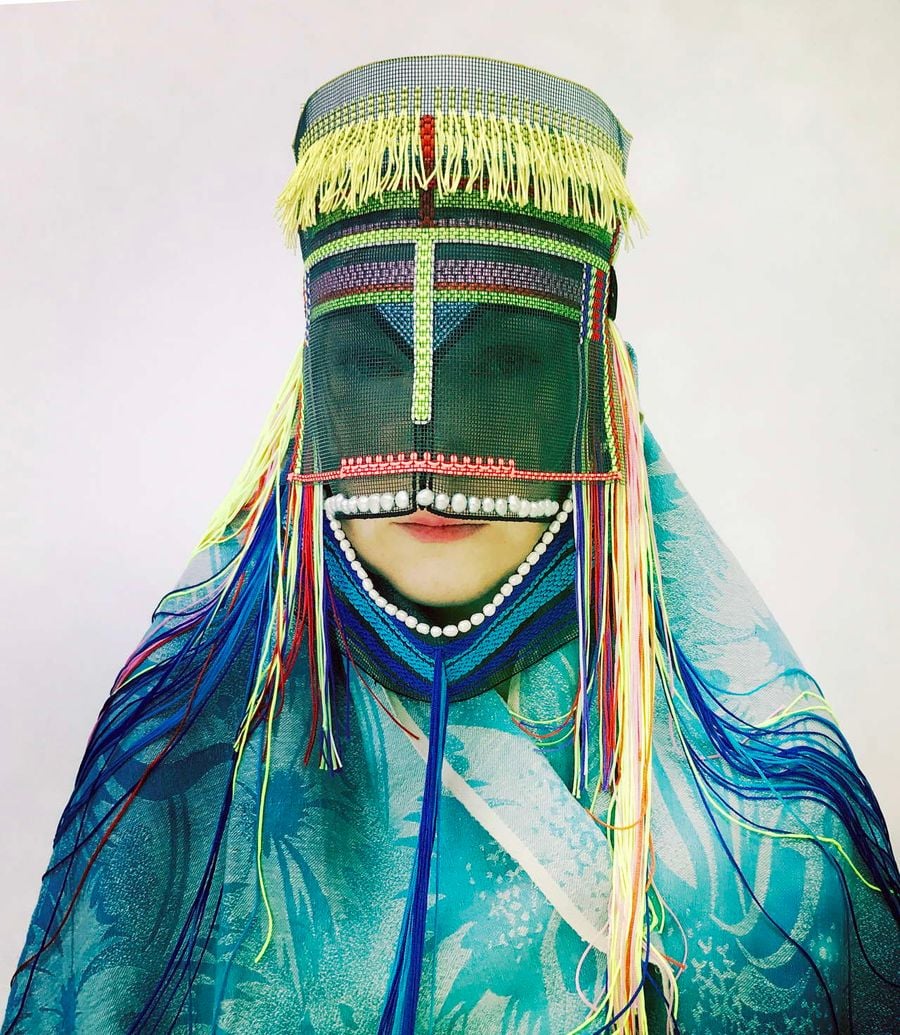
Self-portrait. Photo courtesy of Magnhild Kennedy.
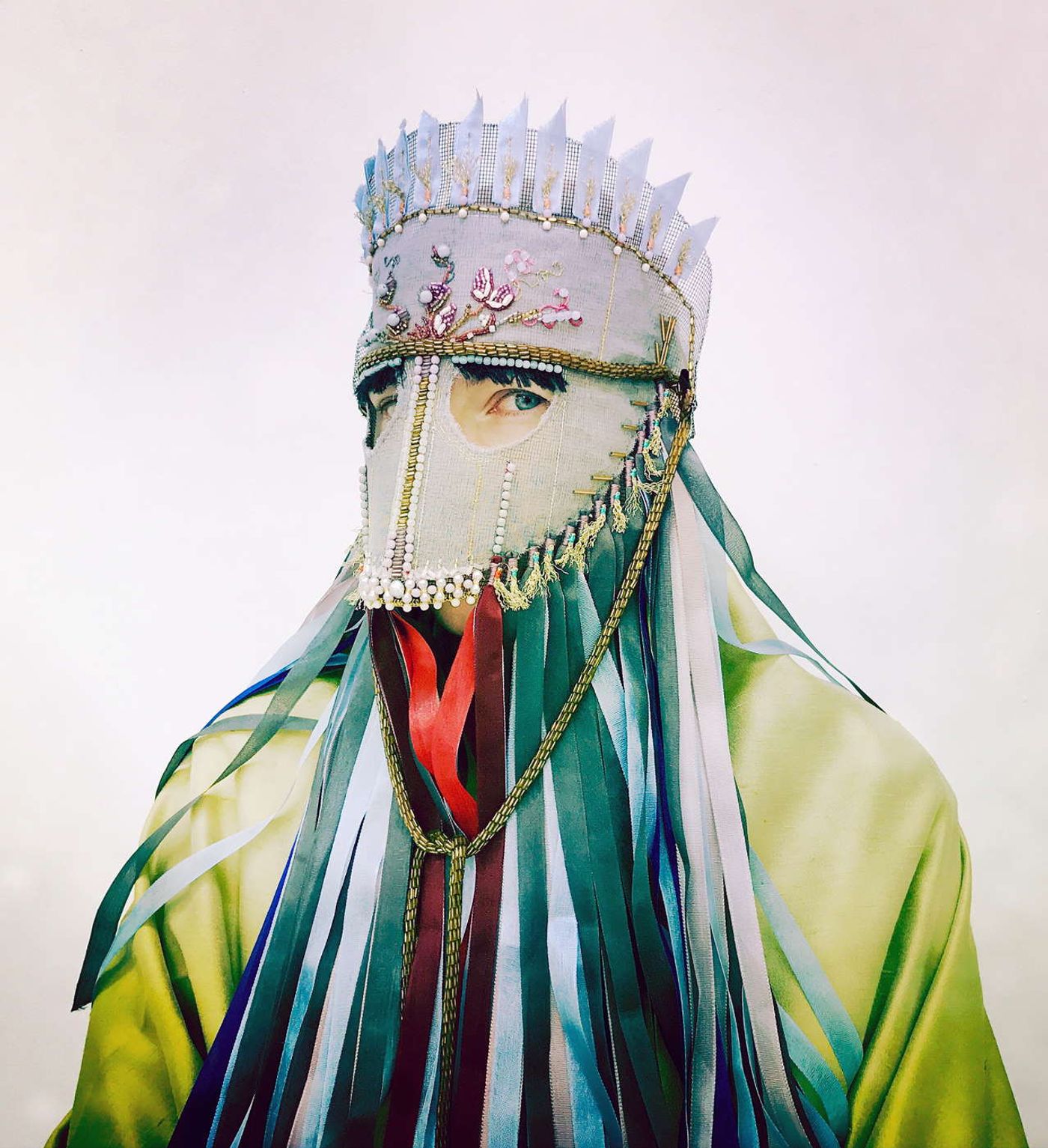
Self-portrait. Photo courtesy of Magnhild Kennedy.
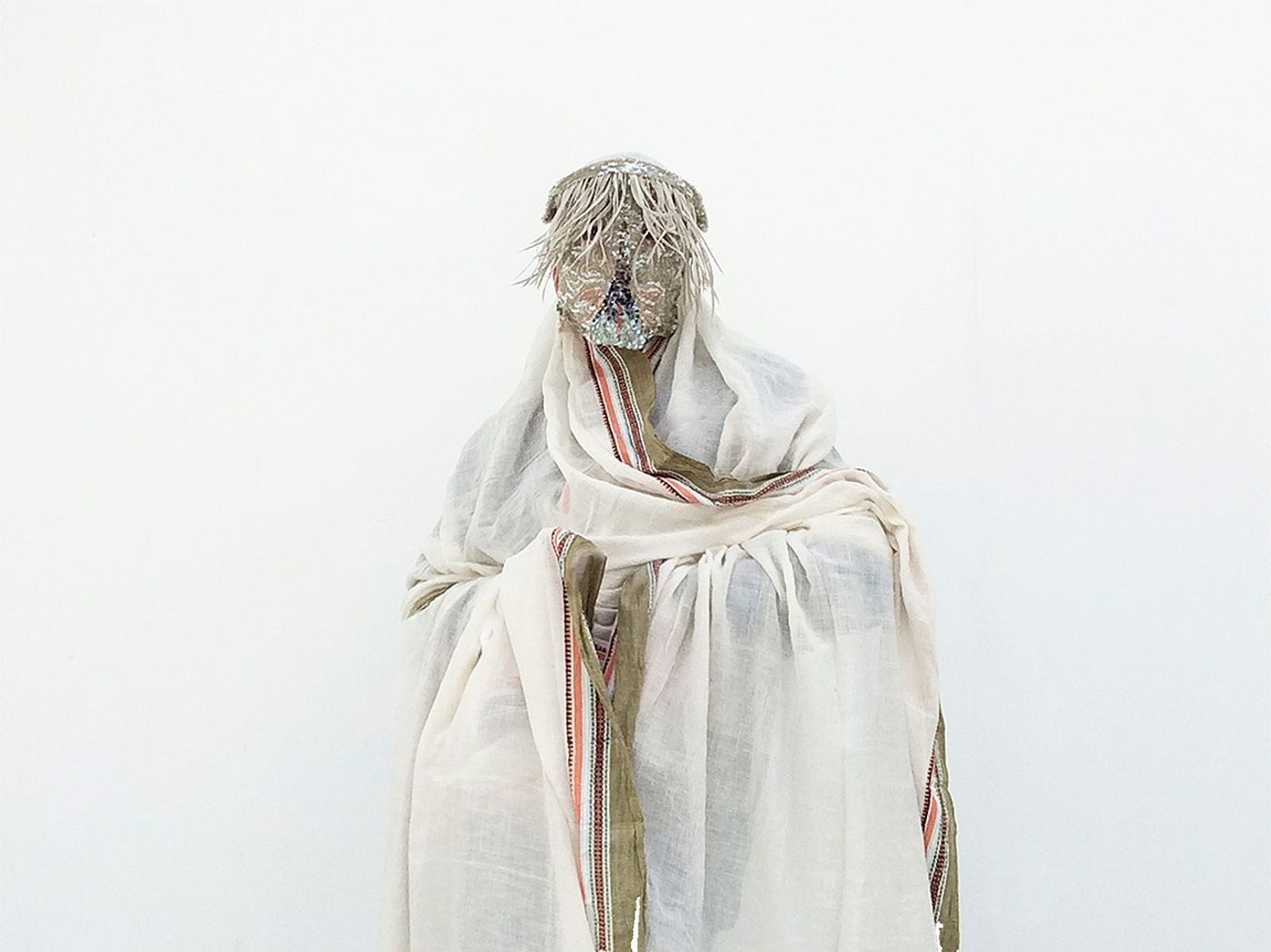
Self-portrait. Photo courtesy of Magnhild Kennedy.
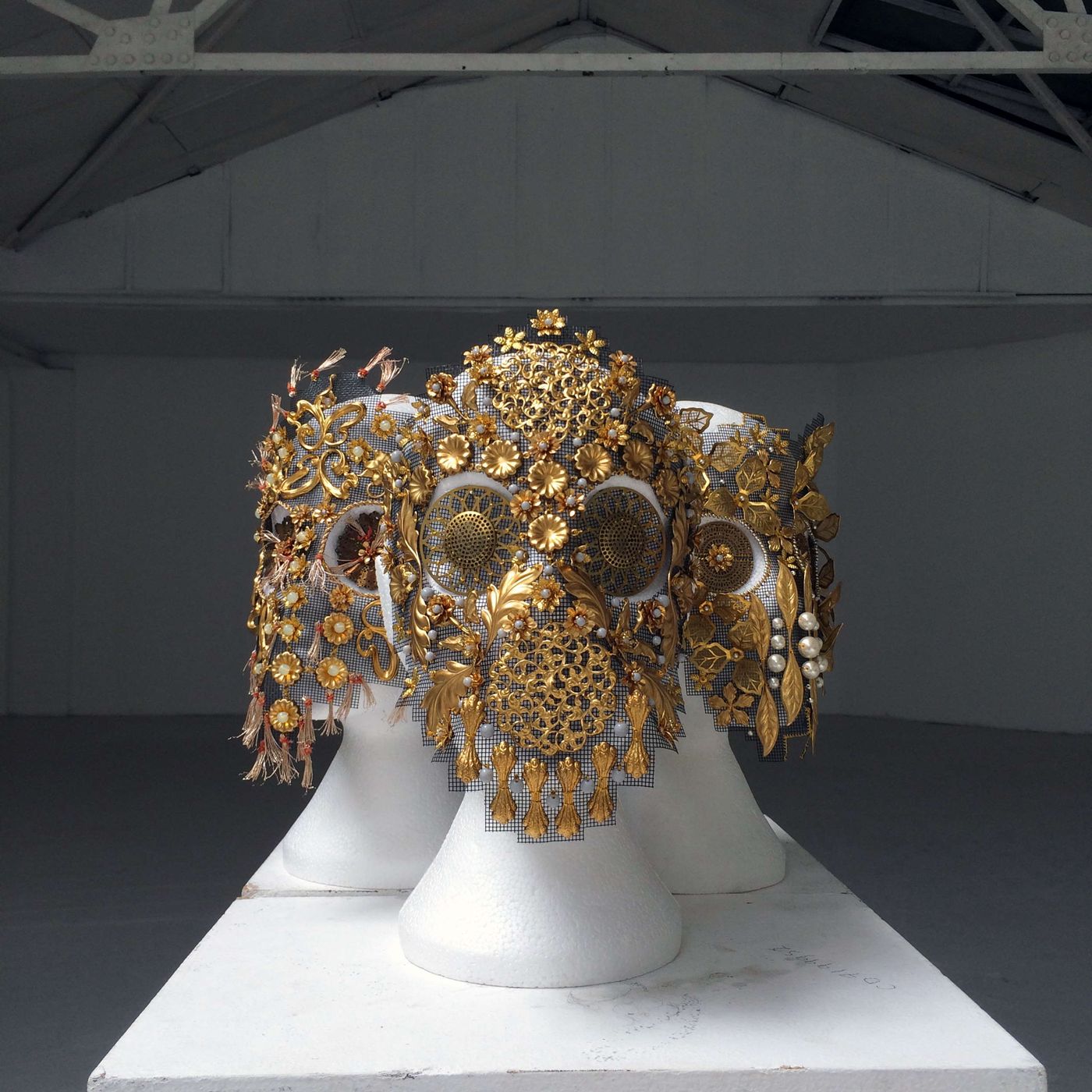
Photo courtesy of Magnhild Kennedy.
Tell us a bit about your background. Did you always have artistic tendencies?
I grew up in a household where both of my parents and most of their friends were artists, so there was really no choice. I’ve always been a maker, but I have no formal art or design education.
How did you get involved in mask-masking?
A fluke. When I moved to London in 2007 I went clubbing a lot and we’d make outfits. The mask popped up in this context and the format stuck. As a kid I was an avid paper doll maker; I look at the masks as a development. Things you fold onto yourself. It's been a long organic process and I've felt it as a very natural one all along the way.
What is the primary driving force in your creative process? Concept, aesthetics or the crafting process itself?
The making. It’s sometimes meditative and sometimes action-packed with lots of speed in it.
What is the underlying intention behind your masks? Are they primarily meant to hide the people wearing them, to reveal a hidden aspect of their character, or are they autonomous entities?
All of that I leave to the experience of others. For me it’s about play and to just put one material next to another. It’s all about the sculpting and making.
Talk to us about your creative process. Do you design the masks beforehand or do experiment while you are crafting them?
No designing and no overthinking. I just sculpt. Most of it happens in the actual sewing and making.
Your work appears as a medley of cross-cultural folkloric references but there’s also something futuristic in them. Where do you draw inspiration from?
First and foremost it’s the materials that dictate and lead the way. I use a lot of used stuff, and they come with limitations. Say if it’s ripped or worn or discoloured. That informs. Texture and colour is important. Just ‘tasting’ and finding the tone and sculpting until it feels right. I’m inspired by people’s homes and how they live with their objects around them. I often feel like I’m decorating a space, more than making a mask.
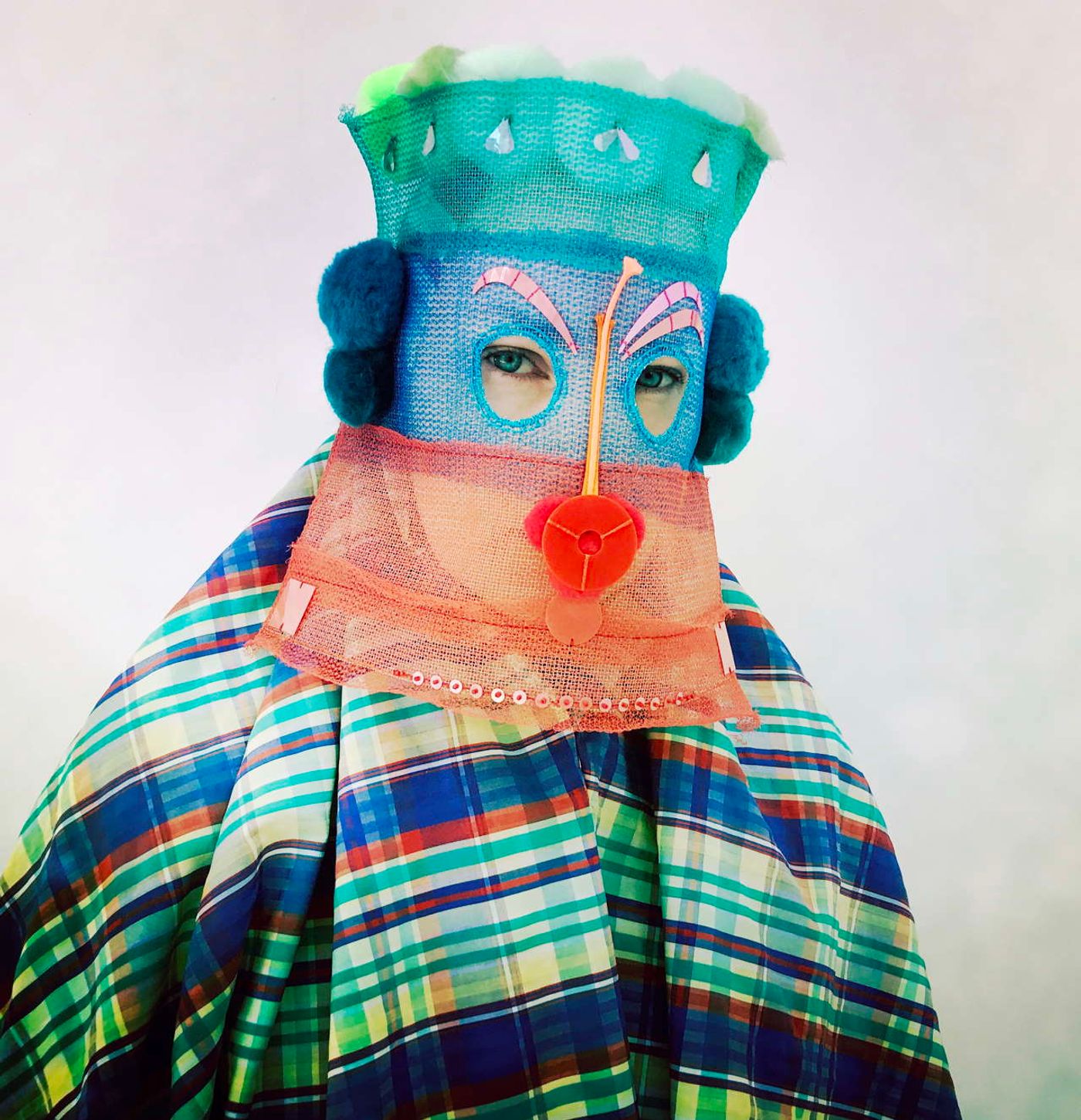
Self-portrait. Photo courtesy of Magnhild Kennedy.
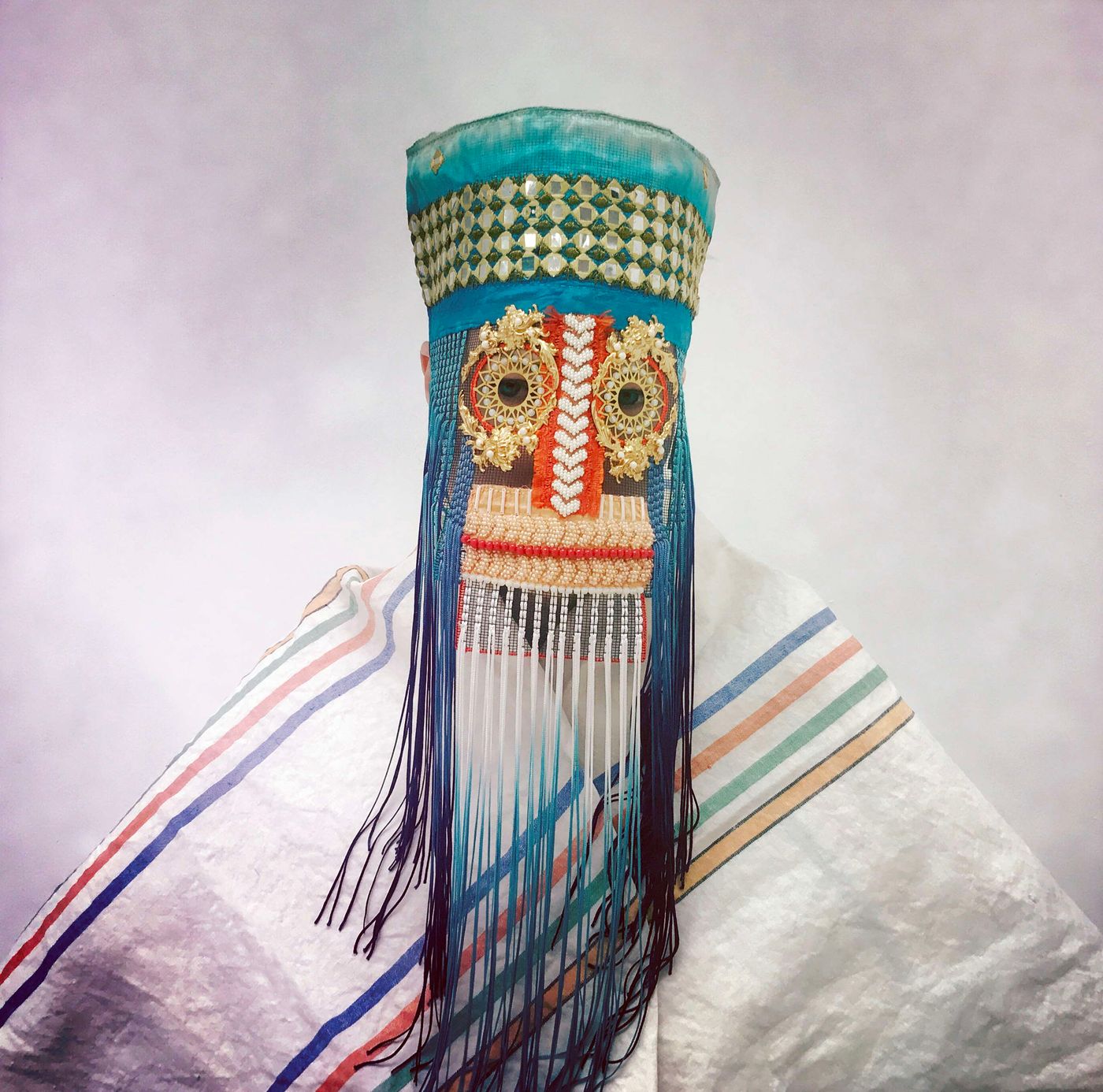
Self-portrait. Photo courtesy of Magnhild Kennedy.
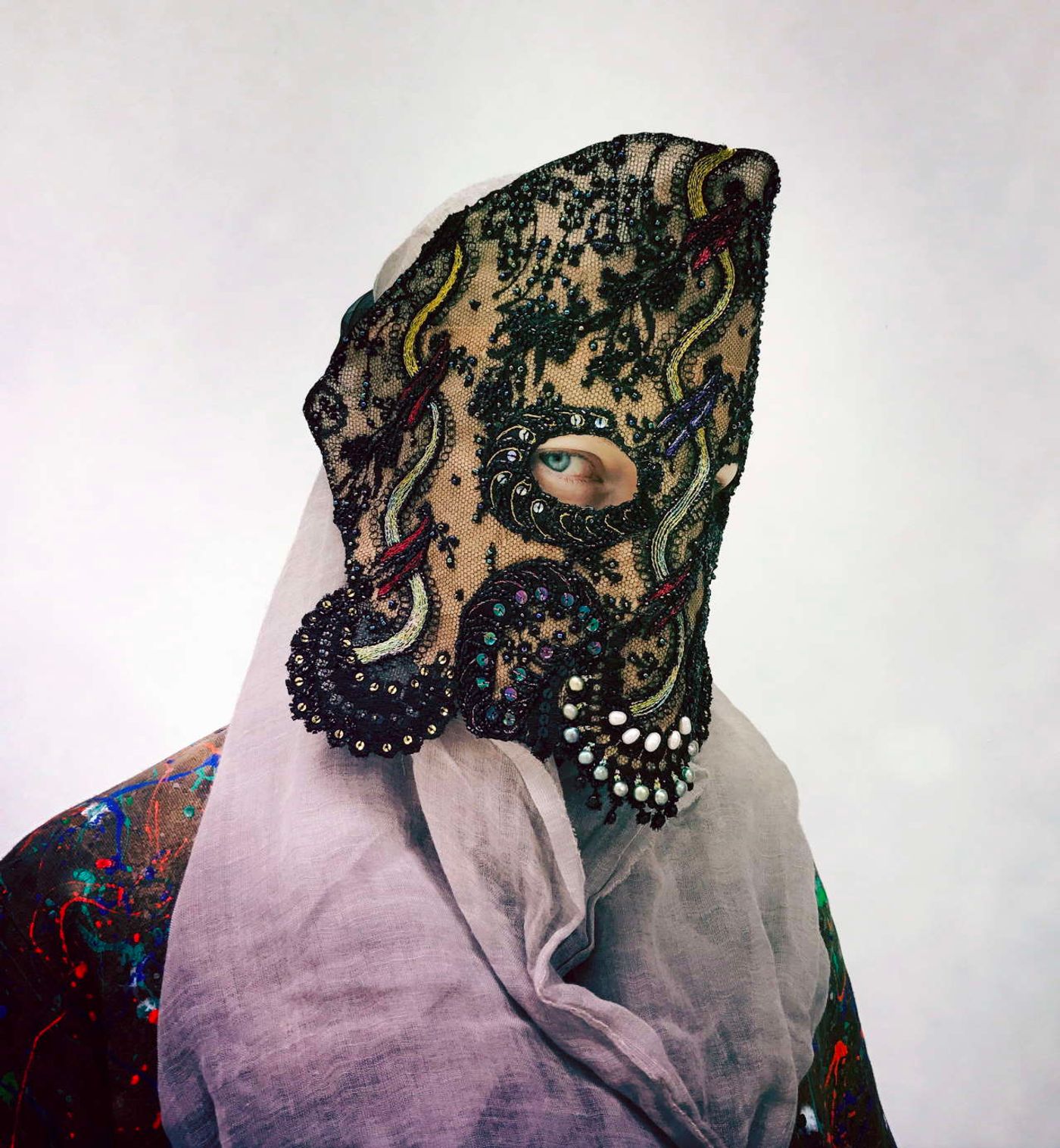
Self-portrait. Photo courtesy of Magnhild Kennedy.

Self-portrait. Photo courtesy of Magnhild Kennedy.
How long does it take you to design and construct a mask? How did you develop the techniques you use?
I’ve learned most from looking at old clothes, a 1930’s sewing encyclopaedia someone gave me and YouTube. I use manly basic sewing and beading techniques. Anyone could do it. Making a mask can take from a day to forever. I’ve had unfinished pieces standing on the shelf for years, just waiting for the right material to come along.
You use a wide range of materials, from precious to disposable, and from one-of-a-kind to generic. What are your criteria in selecting materials for each mask?
Almost anything can work, as long as it has the right colour, texture and personality for the job. There’s no hierarchy amongst the materials. Antique silk or scruffy tea towel, whatever gets the job done. I collect materials so I have lots of boxes in the studio, so a rummage easily gets me going.

Self-portrait. Photo courtesy of Magnhild Kennedy.
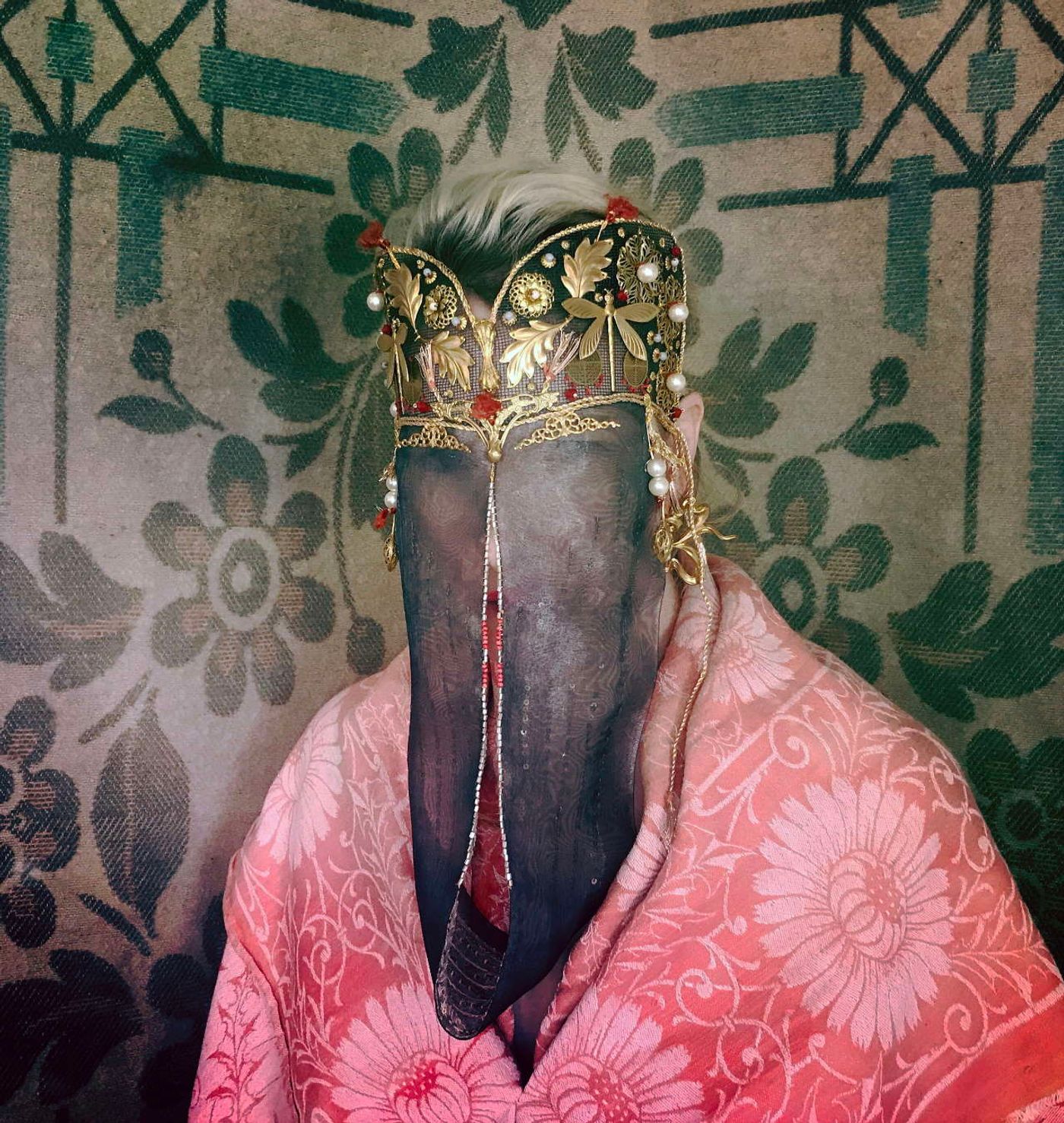
Self-portrait. Photo courtesy of Magnhild Kennedy.
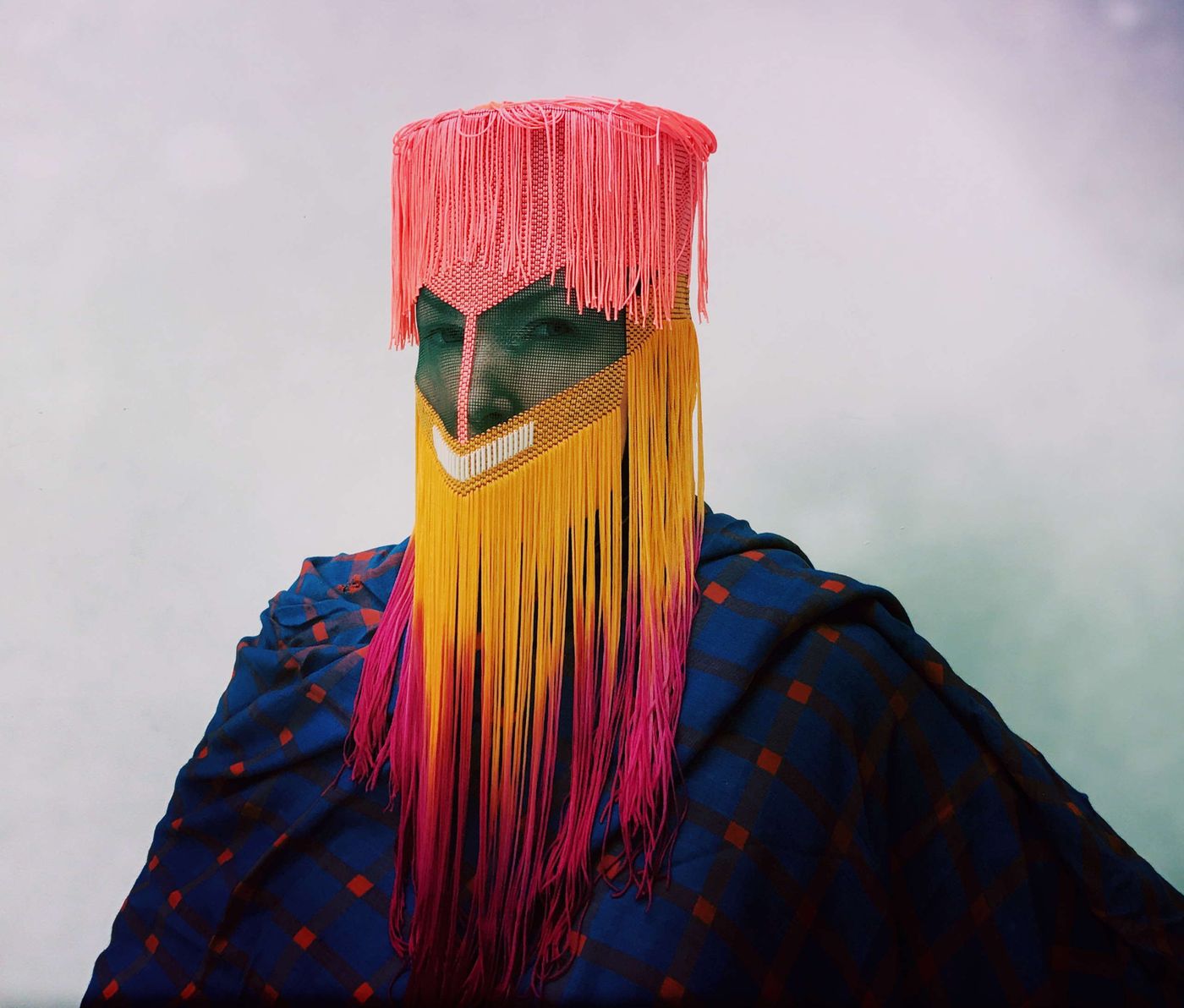
Self-portrait. Photo courtesy of Magnhild Kennedy.
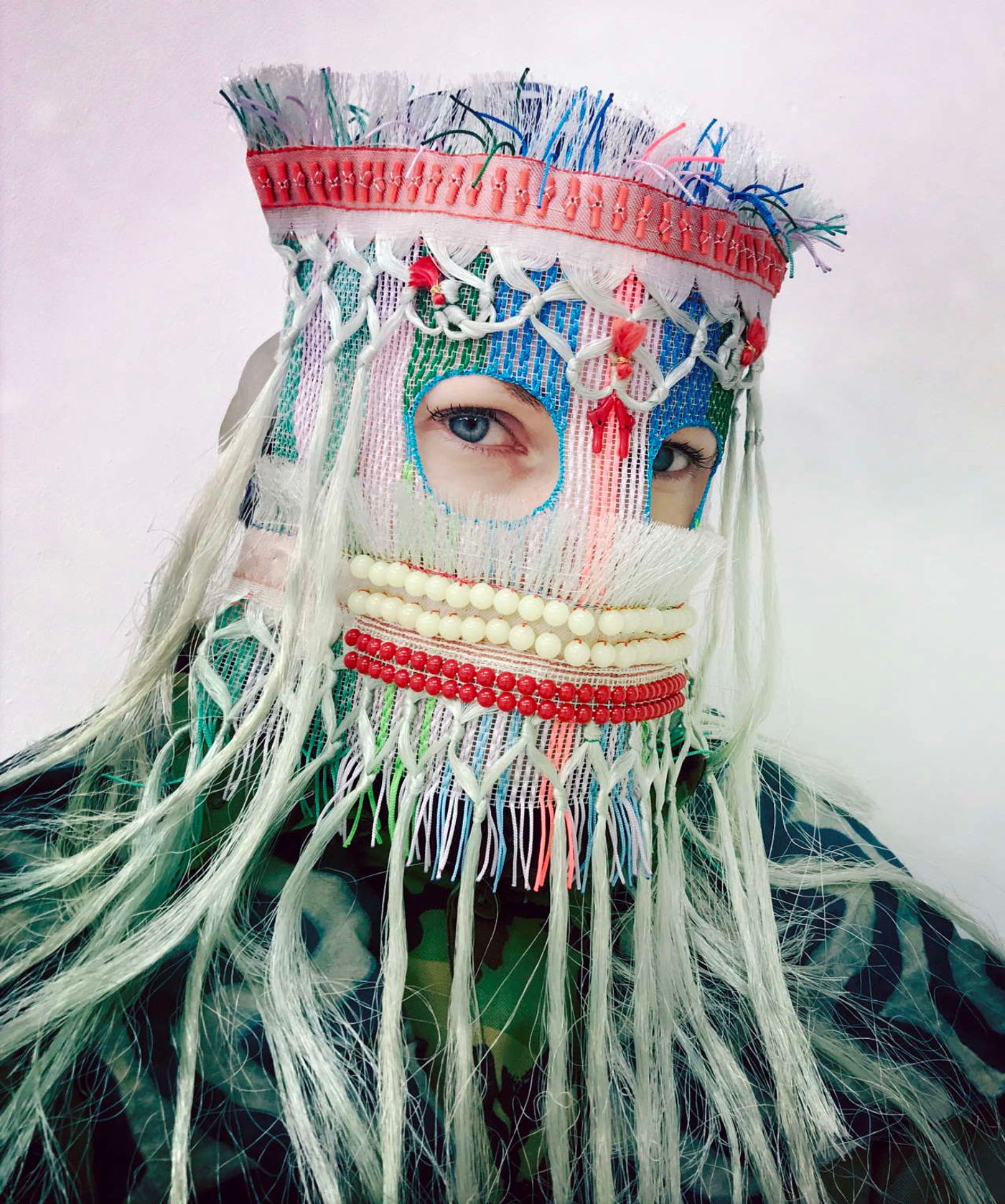
Self-portrait. Photo courtesy of Magnhild Kennedy.
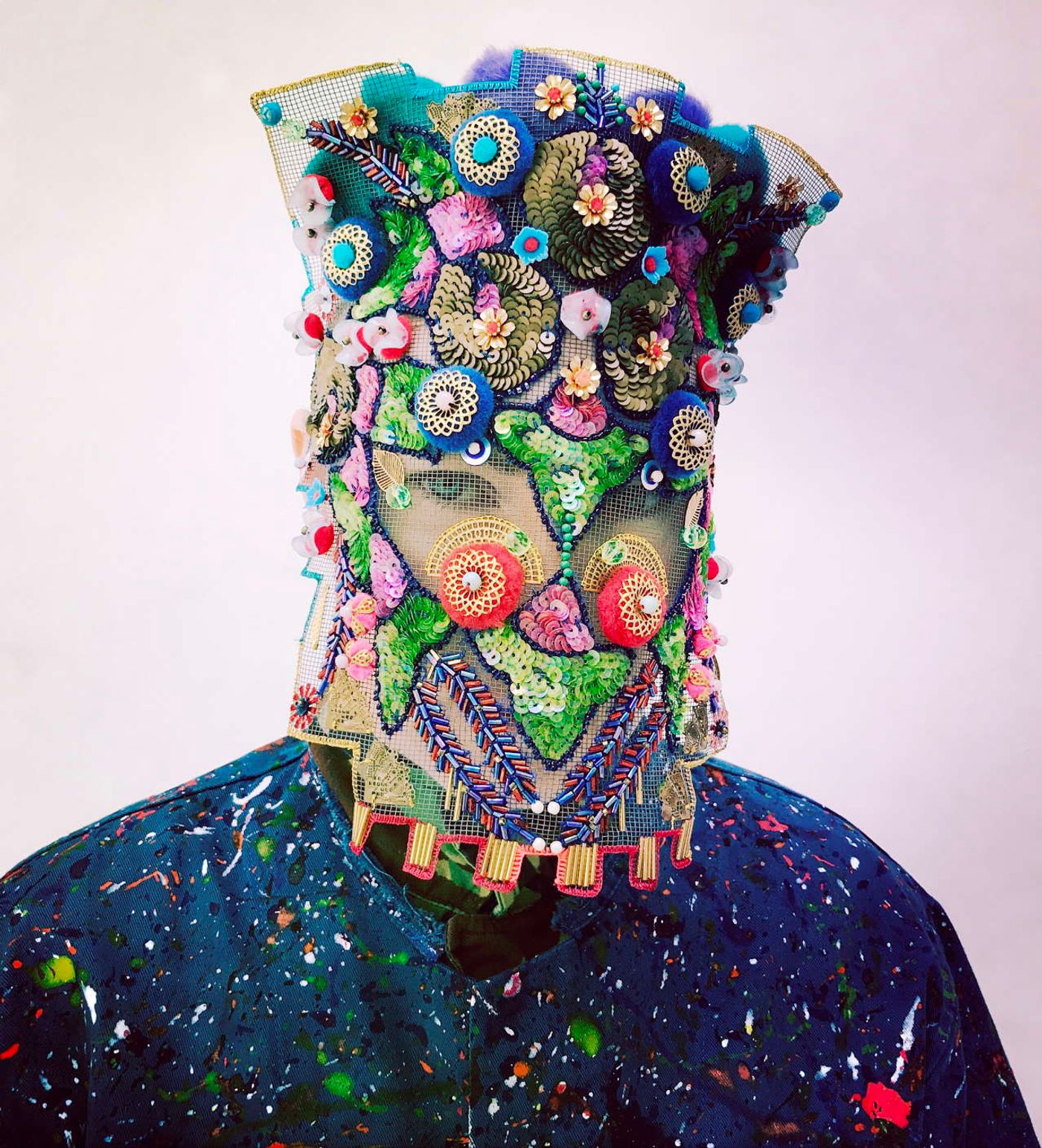
Self-portrait. Photo courtesy of Magnhild Kennedy.
Your pieces have great performative potential. Does this aspect inform your work? Does the creative process differ when you are crafting a mask for a video clip or other performance?
It will for a commissioned piece that needs to do a certain job. But I never think about it when I make pieces for my own work. I try to make as few conscious choices as I can be aware of, and just play. I'm always surprised that a functional mask comes out of it.
There’s something ironic with pairing Damsel, the word for an unmarried young girl, with Frau, the German word for a married woman. What is the story behind your avatar’s name?
It used to be my Online avatar on different platforms in the early 2000’s. I was listening to a lot of German Industrial music at the time and just had a play with words. It lent itself to the mask project naturally. A word that masks itself! To me it has come to mean something like ‘married to one self’.
What are you working on right now?
On September 13th I’m opening a solo show at The National Museum of decorative Arts in Trondheim, my home town in Norway. All of my energy is going into this at the moment.
